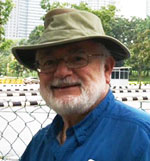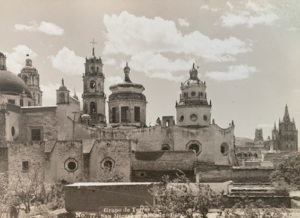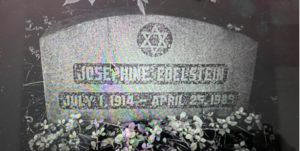By Oliver B. Pollak

RICHMOND, CALIFORNIA — San Miguel sits at 6200 feet in Mexico’s high central altiplano 146 air miles northwest of Mexico City. Passenger train service ceased many years ago. Volaris Airlines very efficiently flies 240 passengers the 1,735 miles non-stop from Oakland to Leon near Guanajuato. Everything costs extra, except a styrofoam cup of water. Then you take a van for a 1½ hour ride to San Miguel.
Karen’s cousins from Winnipeg had been beseeching us for about 5 years to visit. They rent a casita, part of a home, from January-March to escape the bitter cold, minus 20 degree fahrenheit, of the Northern Great Plains. We finally said, “What the heck, let’s go.”
Preparing for the trip included identifying Mexican counterparts to Peter Mayle’s A Year in Provence (1989), and Under the Tuscan Sun (1996) by Frances Mayes. I found On Mexican Time (1999) by Tony Cohan but did not obtain a copy until a week after we had returned to Richmond. Within its 289 pages the endearing word patio appeared 32 times, coffee 17, postcards 4, and numerous mentions of bookstores and burros.
There is a magic, an enchantment, an ambience in the narrow cobblestone streets lined with pastel painted houses, cafes, and abarrotes (groceries). There are a handful of traffic lights and no Stop or Alto signs. Behind the walls are patios or courtyards for dining, chatting, reading, gardening, and hanging laundry to dry. The atmosphere attracts writers, artists, and tourists. Expats may constitute 9-11% of the population.
Karen’s paternal younger cousin, teaches English as a second language in Winnipeg by zoom and in person in San Miguel, at the same time improving her Spanish. She volunteers for Amistad Canada, an NGO that supports about 15 organizations one of which is Feed the Hungry. In San Miguel Fe3ed the Hungry supports 44 schools. Our host organized a trip to one school a visit to the warehouse where trucks pick up a week’s worth of victuals and deliver them to schools. The food budget is $50,000 per month. Much of the labor is donated.
Our cousin’s husband is a playwright and is active in playwright groups in Canada and San Miguel. His recent productions include vignettes of Bob Dylan and lectures on Leonard Cohen. A retired psychologist and counselor he is writing about the death of Sigmund Freud, and dementia.

An early San Miguel Jewish resident, Isaac Cohen arrived in Mexico from Syria in 1920. By 1930 he opened a hardware store and prospered. He placed a Star of David above the front door. Today the building is known as Casa Cohen and houses a restaurant, clothing and jewelry store and a gelato shop.
Jewish life is flourishing among the Canadian expats from Winnipeg and Toronto. We attended a film, A Brivele der mamen (A letter to Mother), a 1938 Polish film in Yiddish starring Molly Picon at the Jewish Cultural and Community Center, also known as CHESMA and JC3. Services are held facing the bimah, in Spanish, Hebrew and English, following Conservative Judaism. For other activities, watching films or guest speakers, the chairs are turned 180 degrees and face the screen on the opposite wall.
A loosely organized unaffiliated men’s group meets for breakfast every Friday morning. I attended. After discussing coming and goings, and rental prices the topic turned to “What is your sanctuary?” The responses varied widely from a book-lined room to taking ocean cruises.
We attended a playhouse program of six ten minutes plays, some ran aa little over 10 minutes. Three plays involved aging and death, one included the Grim Reaper. Perhaps it appealed to the demographic of a retired audience. My favorite 10 minute involved the revelation by parents to a 30-year-old son fixated on Christmas that he was adopted and Jewish.
San Miguel Chabad center opened in 2018 and offers a wide array of services. There are almost 20 Chabad centers in Mexico.

We walked in the Cemetery of Our Lady Guadalupe, one of San Miguel’s final resting places. There is a Gringo section where we detected 42 gravestones, headstones or tombstones and crypts marked with a Star of David or obviously Jewish heritage names. The earliest burial occurred in 1988. Ages ranged from 62 to 98, The average age at death was in the 80s. Thirty-eight of the 42 burials, 90 percent, occurred since 2000.
San Miguel presents retirees a pleasant unhurried life. Politeness is the rule of the day. Enjoying walking, cafes, contemplating local beauty, in a culture of reading, writing and art is enriching. Electrical power may go out but it seeps back. Our nine days of pleasant 85 degree heat, schmoozing with generous cousins, was a most enjoyable learning experience.
*
Oliver B. Pollak, Ph.D., J.D., professor emeritus of history at the University of Nebraska at Omaha, a lawyer, and a member of the Institute of Historical Study, is a correspondent based in Richmond, California. He may be contacted at oliver.pollak@sdjewishworld.com.
JC3 stands for Jewish Cultural & Community Center
CHESMA stands for Comunidad Hebreo en San Miguel de Allende.
There are many cultural and community events held in addition to services, such as 2 community Seders.
See http://www.shalomsanmiguel.org